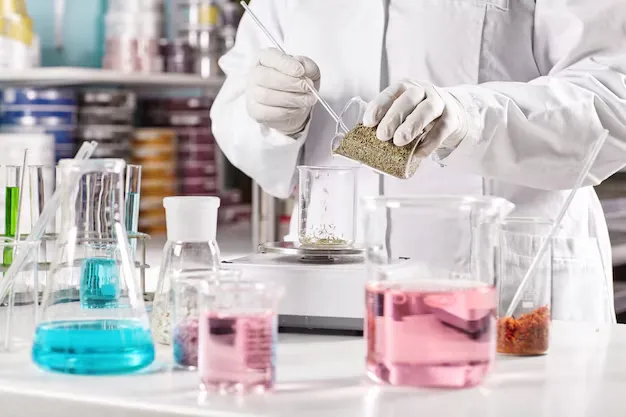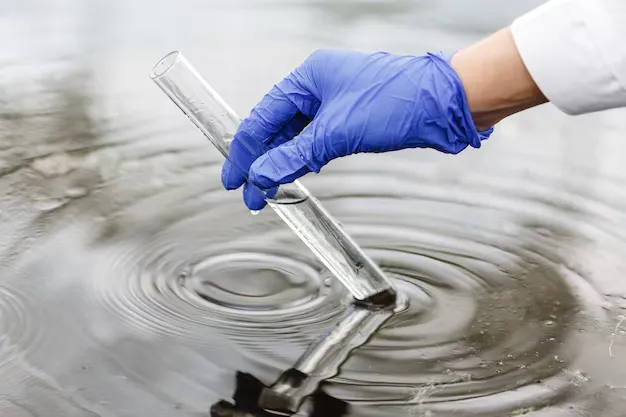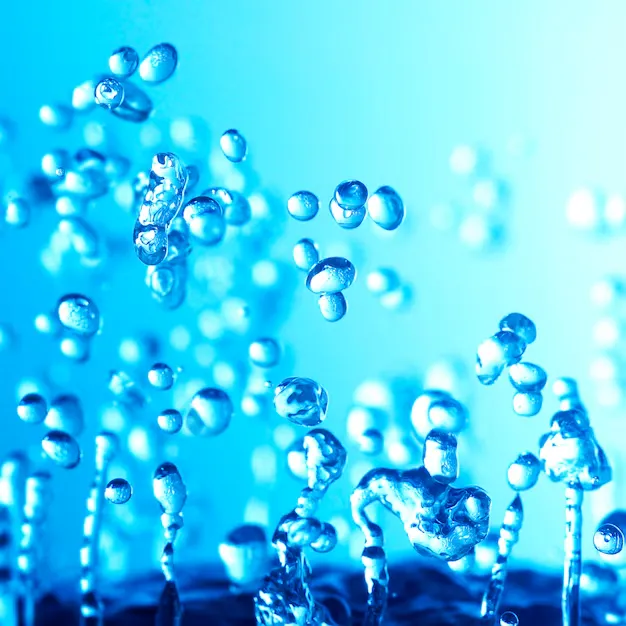Revolutionizing Sustainability: How Recycled MMA Chemical is Produced

Introduction
As businesses increasingly adopt regenerated Methyl Methacrylate (MMA) monomers for their sustainability benefits, ensuring product quality is crucial. High-quality regenerated MMA can deliver the same performance as virgin MMA, but selecting the right product requires careful evaluation.
In this blog post, we’ll explore the key indicators of quality in regenerated MMA monomers and share practical tips and quality control measures to help you make an informed purchase decision.
Introduction: Understanding Recycled MMA Chemical
Recycled Methyl Methacrylate (MMA) chemical is a sustainable alternative to virgin MMA, produced by recycling post-industrial and post-consumer acrylic waste. Unlike traditional MMA, which is derived from petrochemical sources, recycled MMA is obtained through an advanced chemical recycling process that breaks down waste acrylic materials into monomers. These monomers are then purified to achieve high purity and quality, making them suitable for various industrial applications. The recycling process conserves resources, reduces landfill waste, and minimizes carbon emissions, contributing to a circular economy and environmental sustainability. In this guide, we explore the step-by-step process of producing recycled MMA chemical, its environmental impact, and its benefits for sustainable manufacturing.
What is Recycled MMA Chemical?
Recycled MMA chemical is produced by recycling waste acrylic materials, such as discarded acrylic sheets, PMMA scrap, and end-of-life products. These waste materials undergo a chemical breakdown process called depolymerization, which converts them into high-purity MMA monomers. These recycled monomers retain the same chemical composition and performance characteristics as virgin MMA, ensuring consistent quality and reliability. By using recycled MMA, manufacturers can reduce their environmental footprint and contribute to sustainable product development.

Why is Recycling MMA Important for Sustainability?
Recycling MMA is crucial for environmental sustainability as it reduces dependence on non-renewable petrochemical resources and minimizes plastic waste. By converting waste acrylic products into reusable monomers, recycled MMA supports a circular economy, where materials are continuously reused and repurposed. This recycling process reduces landfill waste, conserves natural resources, and lowers carbon emissions, making it an eco-friendly alternative to virgin MMA.
Why is Recycling MMA Important for Sustainability?
Recycling MMA is crucial for environmental sustainability as it reduces dependence on non-renewable petrochemical resources and minimizes plastic waste. By converting waste acrylic products into reusable monomers, recycled MMA supports a circular economy, where materials are continuously reused and repurposed. This recycling process reduces landfill waste, conserves natural resources, and lowers carbon emissions, making it an eco-friendly alternative to virgin MMA.
Depolymerization: Breaking Down Acrylic Waste
Depolymerization is the first step in the chemical recycling process, where waste acrylic materials are heated to high temperatures in the presence of a catalyst. This process breaks down the long polymer chains into individual MMA monomers. The temperature and catalytic conditions are carefully controlled to maximize yield and minimize energy consumption. The depolymerized monomers are then collected as a vapor, which is condensed into a liquid form for further purification.
Purification and Distillation: Ensuring High Purity
After depolymerization, the raw MMA monomers undergo a purification process to remove impurities, contaminants, and residual catalysts. This is achieved through fractional distillation, where the monomers are separated based on their boiling points. The purified monomers are then filtered to eliminate any remaining solid particles, ensuring high purity and consistent quality. The resulting recycled MMA chemical is chemically identical to virgin MMA, making it suitable for a wide range of industrial applications.

Types of Waste Materials Used in MMA Recycling
MMA recycling utilizes a variety of waste materials, including post-industrial scrap, post-consumer products, and end-of-life acrylic items. These materials are sourced from different industries, such as automotive, construction, electronics, and consumer goods. By recycling these waste materials, the process reduces landfill waste and promotes resource conservation. The most commonly recycled waste materials include acrylic sheets, PMMA (Polymethyl Methacrylate) scrap, and discarded plastic products. Understanding the types of waste materials used in MMA recycling provides insights into the sustainability and efficiency of the recycling process.
Post-Consumer Waste: Reducing Landfill Pollution
Post-consumer waste consists of discarded acrylic products, such as signage, displays, automotive parts, and electronic housings. These end-of-life products are collected, sorted, and processed for recycling. By converting post-consumer waste into high-purity MMA monomers, the recycling process reduces landfill pollution and plastic waste, supporting environmental sustainability.
Post-Industrial Waste: Efficient Resource Utilization
Post-industrial waste refers to acrylic scrap generated during manufacturing processes, such as cutting, molding, and extrusion. This includes off-cuts, trimmings, and defective products that are unsuitable for sale. By recycling post-industrial waste, manufacturers can optimize resource utilization, reduce production costs, and minimize environmental impact.
Environmental Impact of Recycling MMA Chemical
Recycling MMA chemical offers significant environmental benefits by reducing landfill waste, conserving natural resources, and minimizing carbon emissions. The recycling process uses less energy and produces fewer greenhouse gases compared to virgin MMA production. Additionally, it reduces the demand for petrochemical feedstocks, lowering the environmental footprint of manufacturing. By promoting a circular economy, MMA recycling supports sustainable development and climate change mitigation.
Reducing Carbon Emissions and Energy Consumption
The chemical recycling process for MMA requires up to 50% less energy than virgin MMA production. This energy efficiency significantly reduces carbon emissions and environmental impact. Additionally, by recycling waste materials, the process conserves raw petrochemical resources, contributing to a low-carbon and sustainable economy.
Minimizing Plastic Waste and Landfill Pollution
Recycling MMA chemical helps divert plastic waste from landfills, reducing pollution and environmental degradation. By repurposing waste acrylic materials, the recycling process minimizes plastic pollution in oceans and ecosystems. This sustainable approach promotes resource recovery and environmental stewardship, contributing to a cleaner and healthier planet.
Conclusion:
The recycling of MMA chemical is revolutionizing the manufacturing industry by providing a sustainable and efficient alternative to virgin MMA. By transforming waste acrylic materials into high-purity monomers, the chemical recycling process reduces landfill waste, conserves natural resources, and minimizes carbon emissions. This circular economy approach not only promotes environmental sustainability but also supports regulatory compliance and corporate social responsibility. As industries worldwide transition towards greener practices, recycled MMA chemical is emerging as a key player in sustainable product development and eco-friendly manufacturing.
The advanced depolymerization and purification techniques used in MMA recycling ensure consistent quality and performance, making recycled MMA suitable for demanding industrial applications. Its versatility and high performance make it ideal for producing acrylic sheets, automotive parts, adhesives, coatings, and construction materials. Additionally, the cost-effectiveness and stable supply chain of recycled MMA enhance profitability and operational efficiency, making it a preferred choice for environmentally conscious manufacturers.
In conclusion, the production of recycled MMA chemical is paving the way for a sustainable future by promoting resource conservation, reducing plastic pollution, and lowering carbon emissions. By adopting MMA recycling, industries can achieve sustainability goals, enhance brand reputation, and contribute to environmental protection. As the demand for sustainable solutions continues to grow, recycled MMA chemical is poised to lead the way in circular economy practices and responsible manufacturing.
Frequently Asked Questions
Here are the frequently asked questions (FAQs) that provide essential information about MMA Chemicals and our Methyl Methacrylate (MMA) Monomer products. These FAQs are designed to address common inquiries and help you understand why MMA Chemicals is the preferred choice for MMA Monomer.
Evaluate the quality by checking key indicators like purity, physical properties, and compliance standards. Verify the supplier’s testing methods, batch consistency, and technical support.
Batch consistency ensures that each batch of regenerated MMA meets the same quality standards, reducing the risk of defects in your final products and maintaining production efficiency.
Look for certifications like ISO 9001 (quality management), ISO 14001 (environmental management), and compliance with industry-specific standards such as REACH and RoHS.
